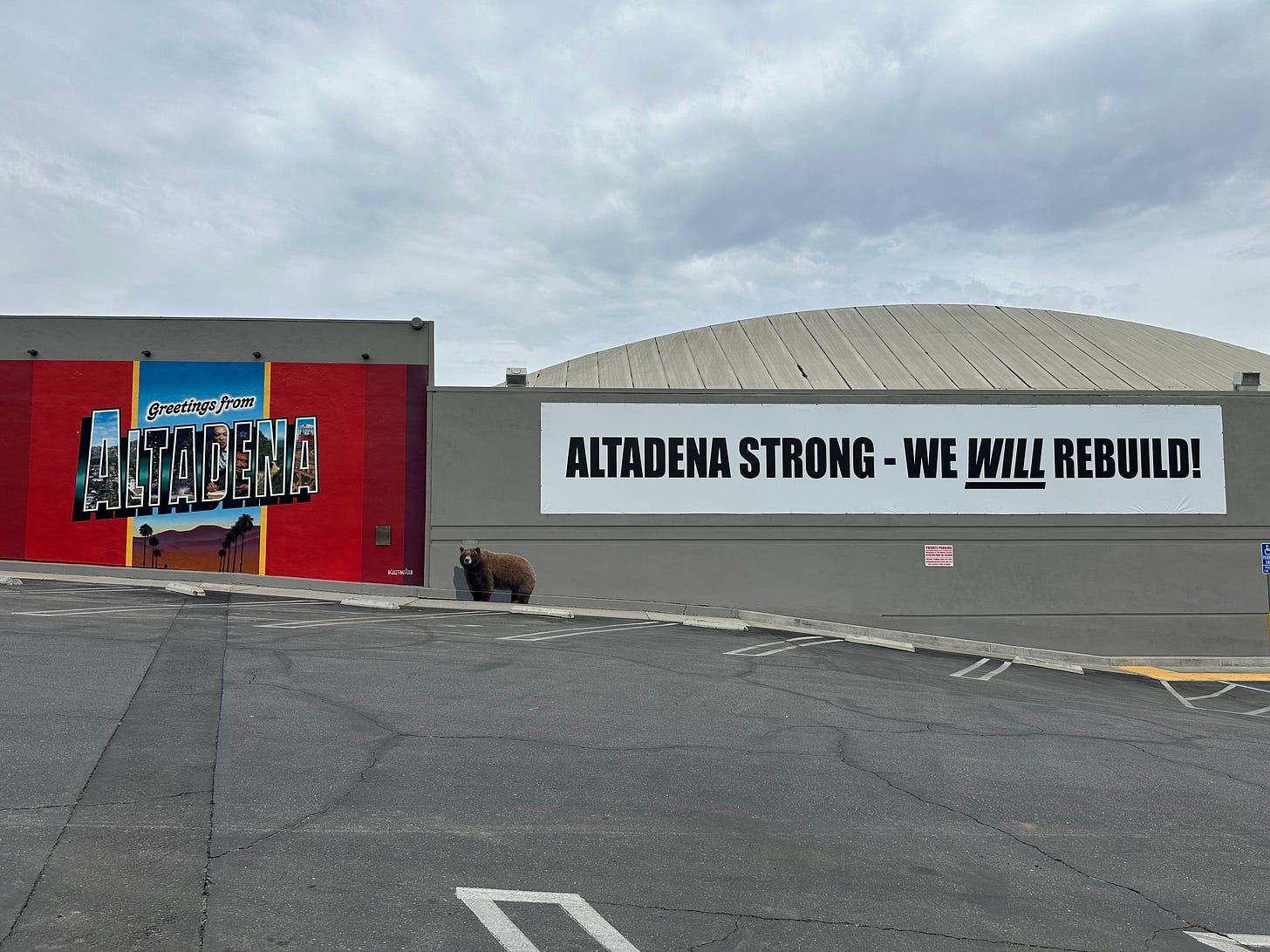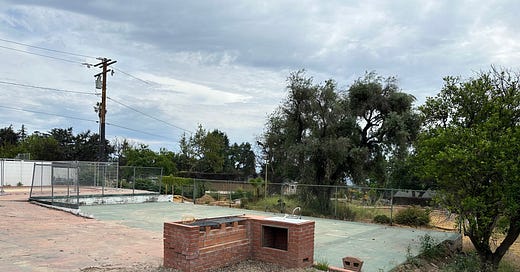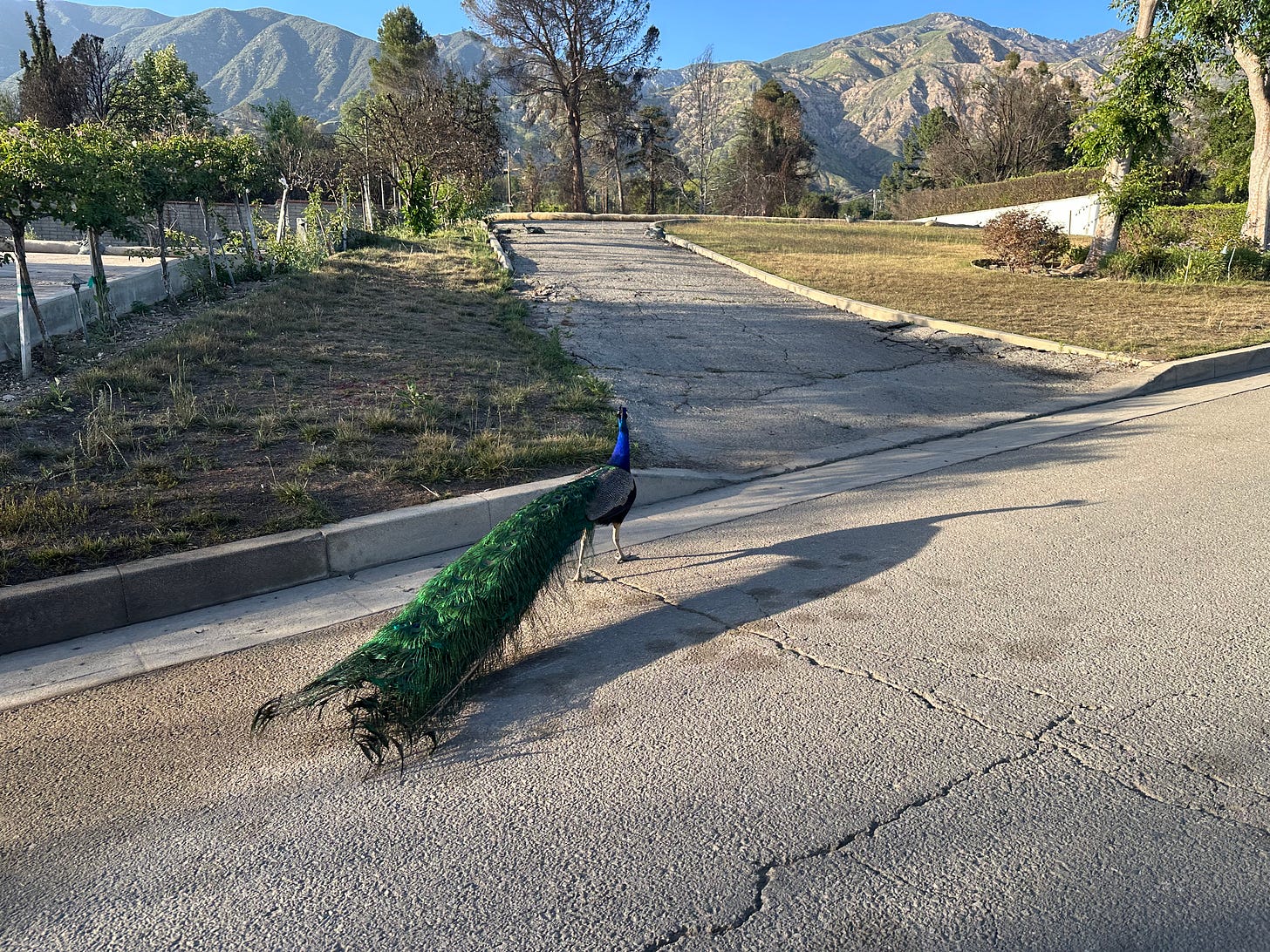Unmaking a Neighborhood
Altadena was unmade by fire, but the journey to remaking this neighborhood is long and winding
As a writer of place, it is often my task to help readers understand how places—towns, cities, communities—are made. If we want to know a place, really know it as somewhere and not just as anywhere, we have to know who wove its fabric and how, what materials they used and why, and how it was shaped by politics and policies. In 2021, my collaborators Jimmy Recinos and Samanta Helou Hernandez and I set out to explore how East Hollywood, especially Virgil Village, was made. We wrote about Virgil Ave and Hoover St, and how Virgil Ave came to be lined with pink trumpet trees. We wrote about an historic Japanese boarding house and its’ tenants’ fight to remain in what used to be a predominately Japanese neighborhood known as J-Flats. We wrote about rental advertisements and how real estate profiteering shapes not just the residents of a neighborhood but its name and boundaries as well. We wrote about local elections and how our political representatives define what is and is not possible for the people they represent.
All of our neighborhoods are shaped by local, state, and federal policy, by histories of migration and community building, by real estate investment and policing, by each and every person that resides in the neighborhood or leaves it behind, whether by choice or force. And increasingly, all of our neighborhoods are being shaped by a newer, more powerful force than all these previous forces combined.
In this publication, we write about what makes a neighborhood, but in January 2025, multiple neighborhoods in Los Angeles County were unmade by fire. As I watched my own house and entire community of Altadena burn, I couldn’t stop thinking about the work I’ve done for so long around place-making and the palimpsest of history we can see when we look closely at the architecture of a place’s buildings, the racial and socioeconomic makeup of its residents, the plants and wildlife that adapt, thrive, or die within its boundaries. But climate disaster threatens to unmake place all over the world, to erase history, and to force new beginnings on unwitting populations.
To watch your neighborhood burn to the ground in a wildfire is to watch the threads of history ignite and arc wildly in many directions as the smoke clears and the dust settles. Out of the ashes of Altadena grew an immediate national, sometimes international interest in Altadena’s history, a history quietly known to its residents pre-fire, but suddenly featured in many major news outlets, depicted in illustrations, captured in thousands of photographs. In those first few weeks, everything felt like it was happening in reverse. Historic Black communities were being reduced to rubble as they simultaneously rose to prominence in the public eye. An NBC news story titled “Effort underway to preserve Altadena's African American history” ran the week after the fire destroyed so much of that very history and took from Black residents the multigenerational wealth they’d slowly been able to build.
The more that real Altadena disappeared from the earth, the more the idea of Altadena shined brightly in a national and international spotlight. Our small town on the edge of a big city, rich with the threads of a million little histories, full of artists and scientists and teachers and writers and abolitionists and food service workers and people finding a way to make it on the outskirts of a city with a much louder legacy. As we have scrambled to reassemble our lives—find stable housing amidst rent gouging, recover insurance funds amidst denials and delays, rebuild our wardrobes and our kitchens amidst the chaos of donation centers—I’ve watched our communities attempt to navigate what comes next.

Being unmade by fire gives us the chance to make something new, and Altadenans have so many dreams for what that something new could look like. There is no one single Altadena community, and as is to be expected, we have conflicting desires around rebuilding, but there are some common threads I’ve witnessed in the many group chats and community picnics and neighborhood email chains I’m a part of. If nothing else, this fire has exposed the mechanisms behind place-making in real time. Each step we take toward rebuilding, each dream we have for the future, is met by some material reality, sometimes supportive, sometimes a barrier.
There are some particularly urgent concerns Altadena is facing right now, largely around money and policy. From a recent CBS article, “As many as two-thirds of fire victims are uninsured or underinsured, according to the consumer advocates at the non-profit United Policyholders.” I could bore you with the details of how this plays out using my own insurance policy as an example, but all you really need to know is that when you buy homeowners insurance (if you’re even able to get insured at all), the insurance company covers you for their own estimate of what it costs to rebuild a home. How they arrive at that estimate is often not transparent, and in our case as well as the case of almost everyone we know in Altadena, their estimate is hundreds of thousands of dollars below the real cost to rebuild.

Rebuilding a home isn’t simply a matter of laying a new foundation, throwing up some walls and windows and a roof, then putting on finishing touches. There is an accordion of steps between total loss of a home and its final recovery, almost all of which come at a high cost for homeowners. We have to account for the cost of destroyed utilities infrastructure (in some cases, like ours, we’ve got an out-of-code septic system and no real ability to connect to the county sewer), boundary surveys, geotechnical and soils reports, structural engineering, architectural design, debris removal (because the Army Corps of Engineers does not remove 100% of the debris on a property). And this is before the actual rebuilding. We’ve got to address landscaping considerations, new fire safety codes, and soil safety after rebuilding is complete.

Our community has been in talks with Southern California Edison, the very company likely responsible for burning down our town, about undergrounding the powerlines, but this task is not as straightforward as it may sound. It includes easements, requires ungodly sums of money (likely to be passed down to the consumer), and will take years to complete. Altadena residents are also potentially paying for the cost of permits related to building a home, and those permits cost in the tens of thousands of dollars. Meanwhile, the City of Los Angeles waived permit fees for residents in the Palisades (the Palisades is under the jurisdiction of the city of Los Angeles, whereas Altadena, an unincorporated area, is under the jurisdiction of the county of Los Angeles and has almost no real political representation). Residents in Altadena are fighting for equal treatment when it comes to this deeply costly endeavor, and while some progress has been made in this arena, residents still await certainty that they won’t have to pay permit fees.
As residents battle insurance companies and the county for funding and support, our land is being bought up by corporate entities faster than any of us are even able to sort through the long list of decisions ahead of us. A few weeks ago, I attended a meeting with state senator Sasha Renee Perez alongside a few other residents as well as people who work in the community land trust world and we asked her to advocate for state funding to help qualified local non-profits purchase land to get it off of the speculative real estate market; without state, federal, or philanthropic funding to halt corporate development of Altadena, we will see this historic Black neighborhood rapidly remade by disaster capitalism without the input of actual residents.
As a recent report from Strategic Actions for a Just Economy (SAJE) concludes, “While the Eaton Fire did not initiate the displacement pressures facing Altadena, it has greatly intensified them. Even before the disaster, the neighborhood was experiencing rising corporate ownership of housing, tenure decline, and demographic shifts that signaled a community in transition. The fire has created the conditions for those existing dynamics to accelerate, allowing investors to consolidate land in areas of rising vulnerability. Altadena is not unique in this experience, but it is a critical site for intervention. With one of the highest Black homeownership rates in Los Angeles County, Altadena is a community where residents have historically built and maintained intergenerational stability—now at risk of being undermined by disaster capitalism.”

Altadena needs immediate funding and appropriate policy to guide that funding if it is to be made again as the dynamic neighborhood it once was—a place where middle class Black and Latino families, as well as racially and ethnically mixed families, can live multi-generationally amid the bears and peacocks, the parrots and coyotes, and the once lush tree canopy at the base of the San Gabriel mountains.
As we advocate for the necessary policies and funding that will help us recover, many local organizations have established themselves as anchors and safety nets of all kinds. My Tribe Rise has been hosting lunches for elderly Black community members to help them access resources and information. Altadena Collective has formed to “help Altadena residents make informed rebuilding decisions” while connecting them to architects with designs that will preserve the rich architectural history of the area and other resources to help them remain in the community. Altadena Tenants Union is supporting many local renters in fighting their landlords for safe living conditions and the right to return home to their neighborhood. Eaton Fire Survivors Network is providing an online space for residents to connect, ask questions, and help each other navigate this crisis. Altagether is coordinating and supporting a network of block captains who are helping their neighbors access resources and information while staying connected to each other despite our geographical disruption. These are just a few of the many groups pre- and post- fire that Altadena residents have made for each other in the vacuum of state or federal support and guidance.
Every day we are confronted with a hundred little questions, all of which will remake the neighborhood we return to (if we can, in fact, return): How will insurance affect my ability to return? How will construction costs affect my ability to rebuild? What will the new architecture of Altadena look like? What will become of the lots sold to for-profit developers and corporate entities? Will SCE bury our power lines? Will our soil be safe enough to grow food or allow our pets and children to play? What new code requirements will shape our homes? How much will our property taxes be post-fire? Will FEMA ever come through with bridge funding? Will taking on an SBA disaster loan destroy us financially? Who will have a say in how our public spaces are used? Will they build hideous condos in the lots around us? Will we be able to connect to the county sewer system? Where will our kids go to school? How long will rebuilding take? What kinds of businesses will populate the commercial corridors? Will the tree canopy recover and what will we plant in place of all we lost? How will renters fare in this new Altadena landscape? Will our standing homes be safe after remediation and will insurance ever pay for the extent of remediation we need? How will we remember and honor our neighbors who died in the fire? Will the county invest in effective fire planning to prevent another disaster like this one?
The Eaton Fire exposed Altadena’s history for the world to see, and from its ashes we have the chance to make a neighborhood from the ground up in real time. This effort is a case study in place-making if there ever was one, and if we can effectively understand how places have been made in the past, we have the chance to make a new kind of place out of the good parts of what was, and with thoughtful visions of what can be.









Thank you for this, Ali. You are giving all of us a window to understand, and I'm so grateful for that. We are wishing you the very best.
Thank You from a neighbor from Farnsworth. You captured the story & painted the picture so well.